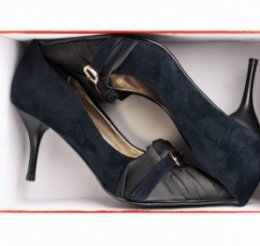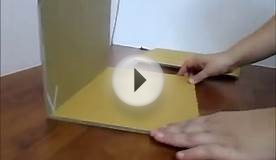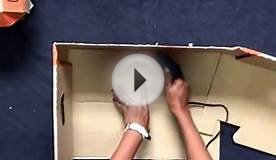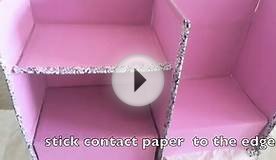Cardboard shoe Storage boxes
Shoes and boots are your hardest working accessories. Storing them properly, especially if you collect vintage shoes or swap seasonal styles, keeps them supple and wearable for years.
Short-Term and Long-Term Storage
Gravity, humidity and aridity can all take their toll on shoes. Over time, the folds and creases that naturally form in worn shoes become permanent deformations of structural elements. As materials age, they become stiff. Vintage shoes with curled leather insoles and crumpled toe boxes usually spent too long without shaping or filling.
For short-term storage, shoes only need the minor support of a shoe tree or reshaping by hand as you set them on a shelf. Kimberley Ripley of Florsheim Shoes advises careful placement when taking off your shoes: “Never simply throw shoes in a pile on the floor, ” she notes. “They’ll lose their shape, and their uppers may sustain irreparable damage.”
Shoes that will be off your feet for a week or more need structure, and wooden shoehorns and stretchers are an elegant option for helping shoes keep their shape. However, you must use the correct size to avoid stretching the shoe. Adjustable versions let you customize the fit before storage. Before inserting wooden or plastic shoe frames, allow shoes to rest for at least a day after wearing to allow any residual moisture to evaporate. Otherwise, the insert could trap dampness within the shoe and lead to deterioration.
Acid-free paper is absorbent and maintains shoes’ proper moisture level while protecting the shoes from soil. When using paper to stuff shoes for moderate- or long-term storage, opt for acid-free tissue instead of newsprint.
While paper may not have enough heft to fill boots and thick leather or felted shoes, unbleached muslin fabric is an excellent alternative. Like paper, muslin wicks away residual moisture and it also protects metal buckles and fragile sequins from scratches.
Before storing shoes, clean them thoroughly and apply leather conditioner to leather soles and uppers. Stuff shoes with just enough material to smooth the toe box and heel but not enough to stretch these areas. Wrap the filled shoes with a length of muslin or acid-free paper before placing the shoes in their storage containers.
Boxes, Racks or Trees?
Specialized shoe storage options range from wire racks to boxes to custom cabinets, but the optimal storage solution depends on how long the shoes will go without being worn. For shoes you wear often, open storage that lets damp leather or fabric breathe keeps shoes fresh. For long-term storage, these solutions don’t provide enough support for shoes.

Shoe Boxes
Boxes give your shoes the highest level of protection from dust, sunlight and temperature extremes that can sap leather shoes of their flexibility. Boxing vintage shoes and boots after stuffing and wrapping them preserves delicate leather, cork and other organic materials. Plastic boxes are another alternative, but be sure shoes are completely clean and dry before storing to prevent mildew growth.



